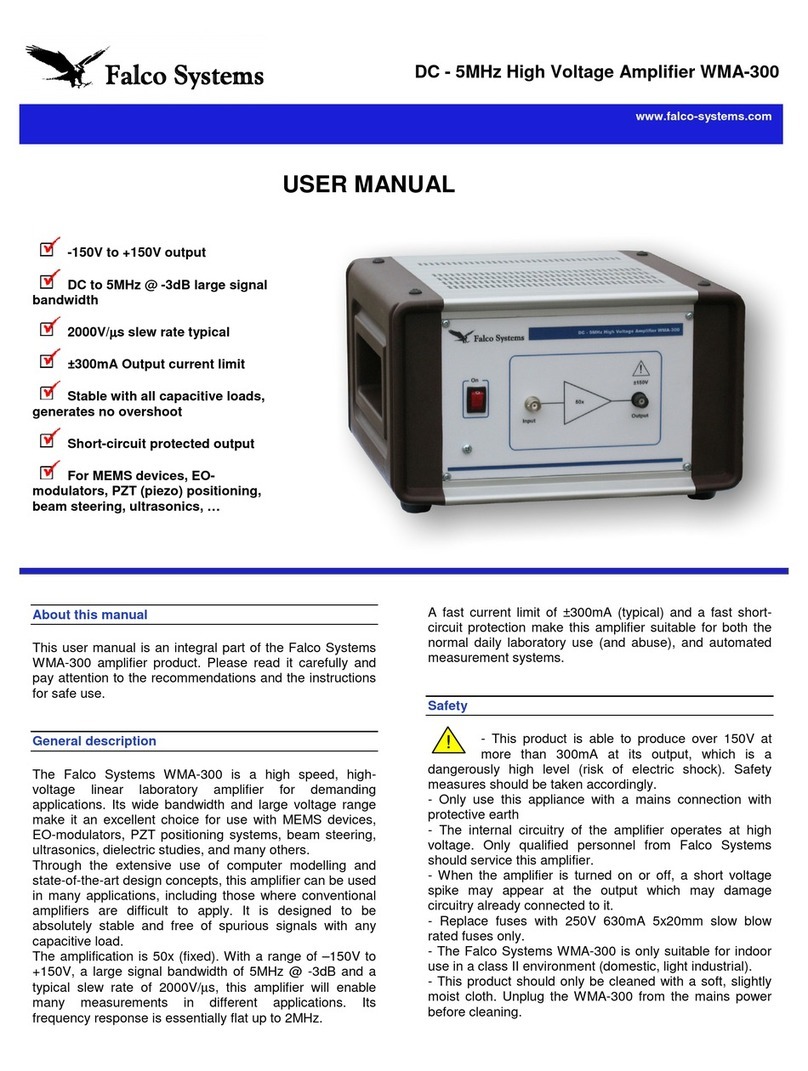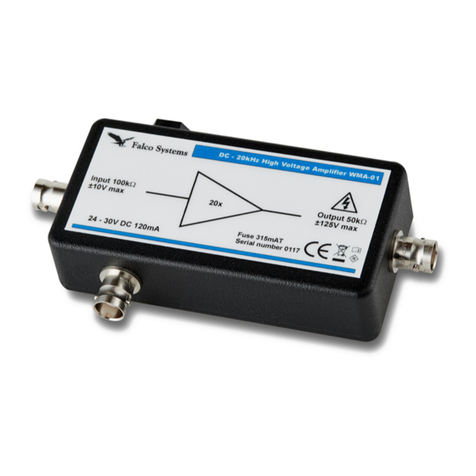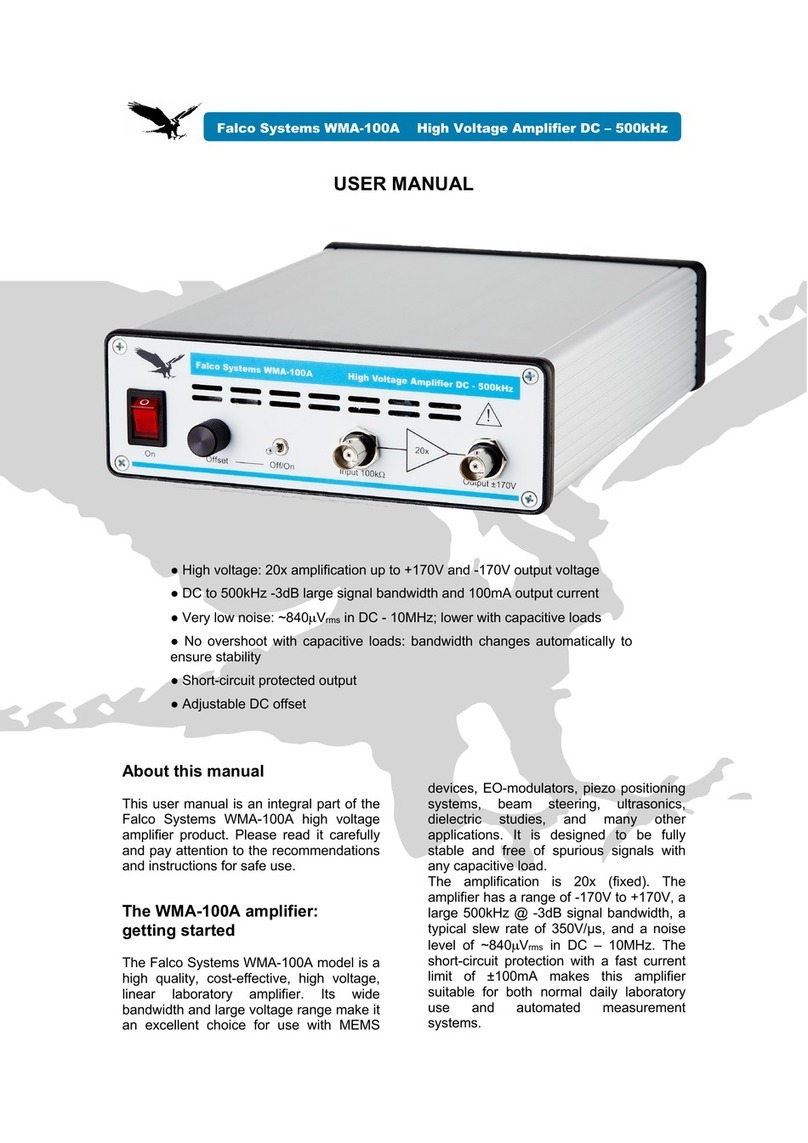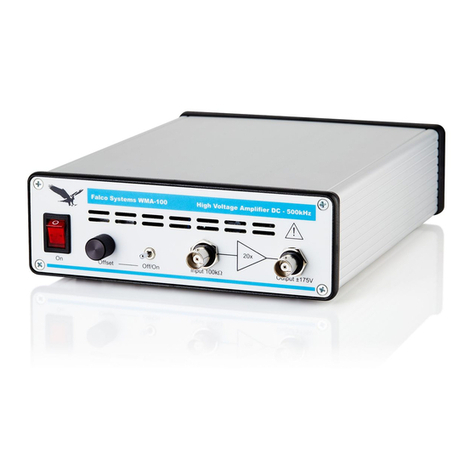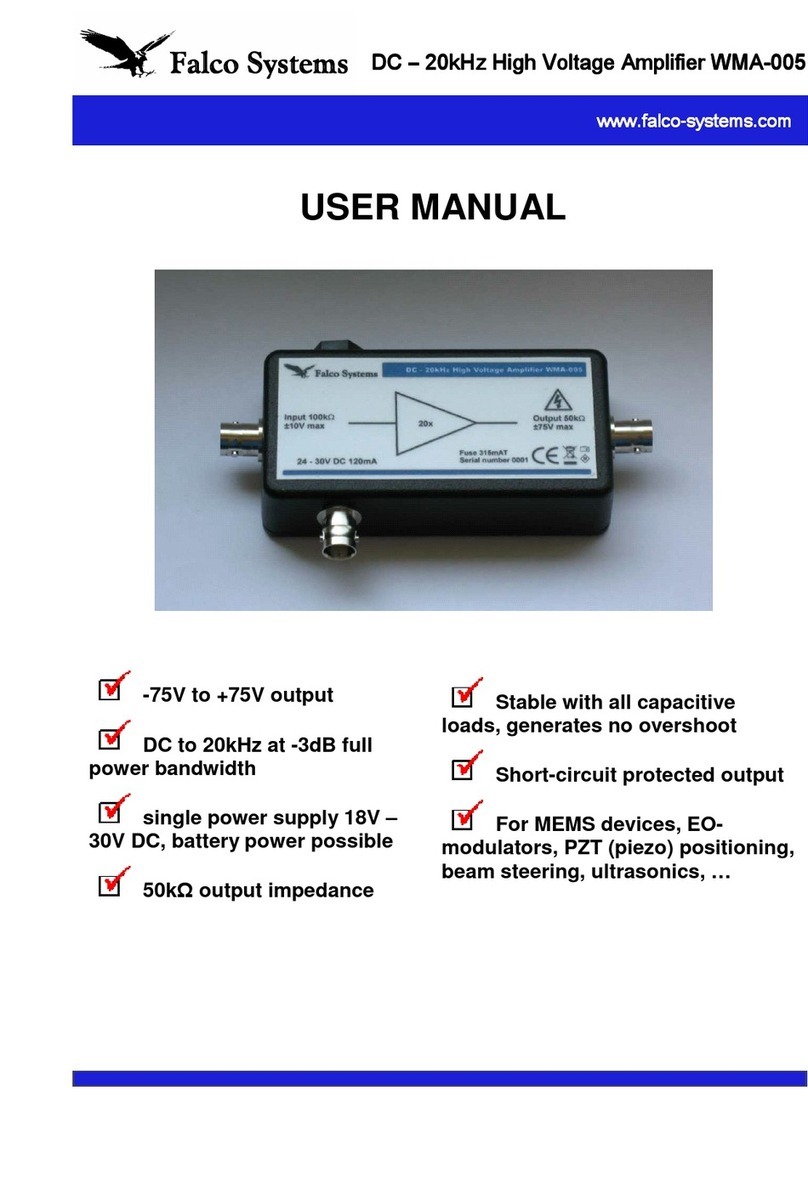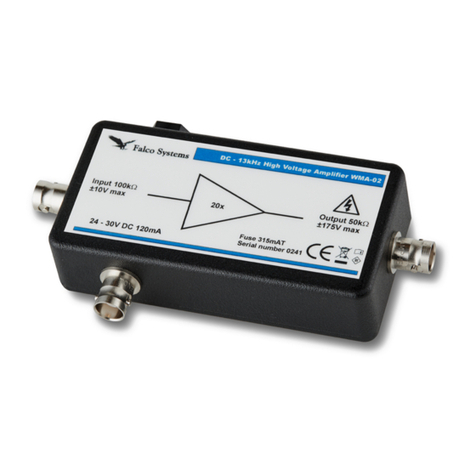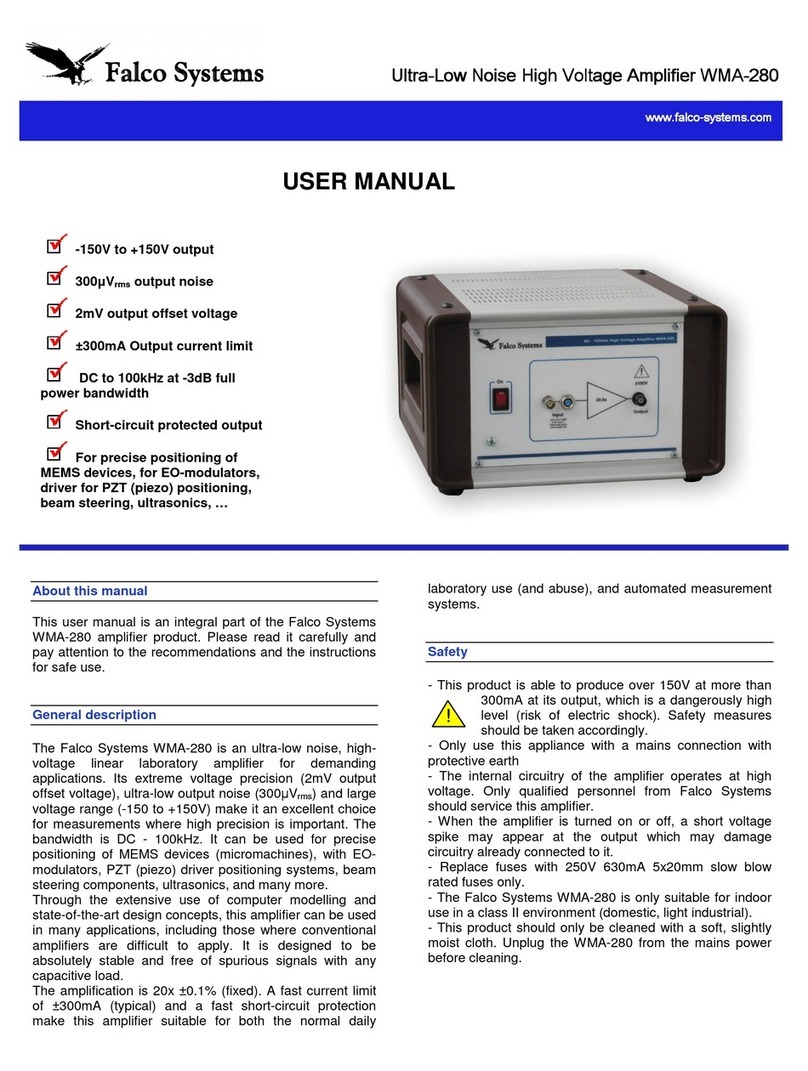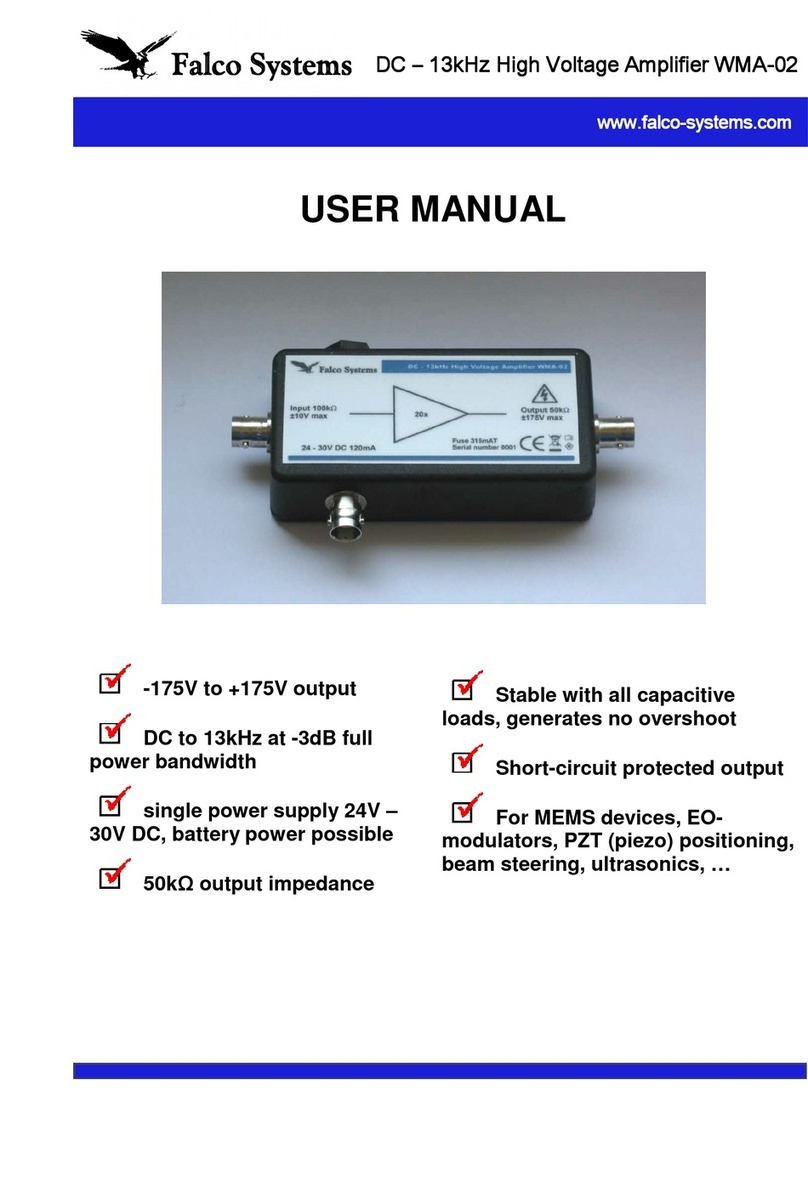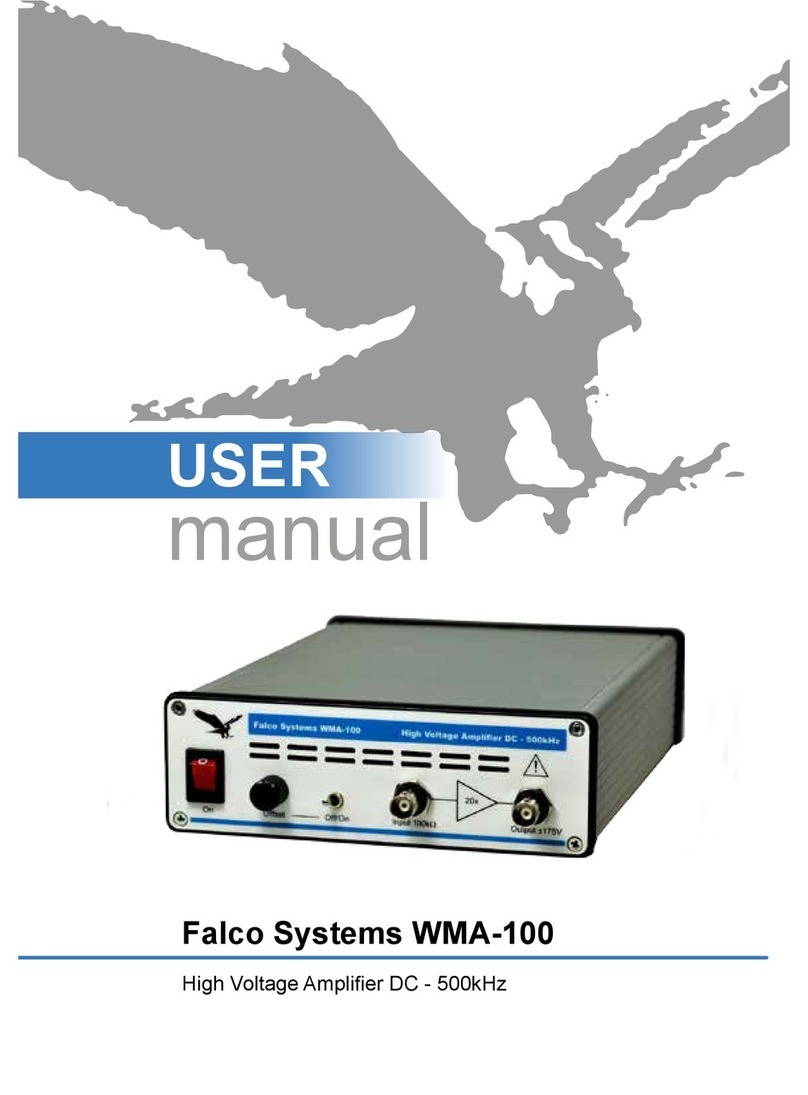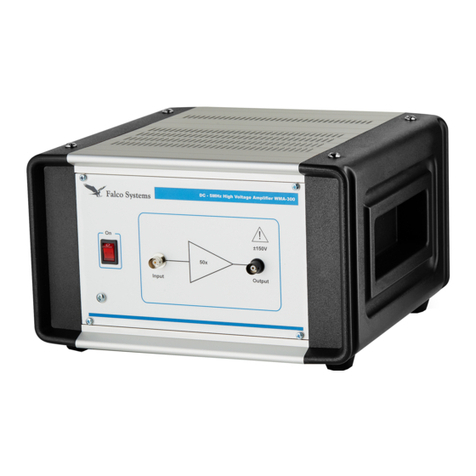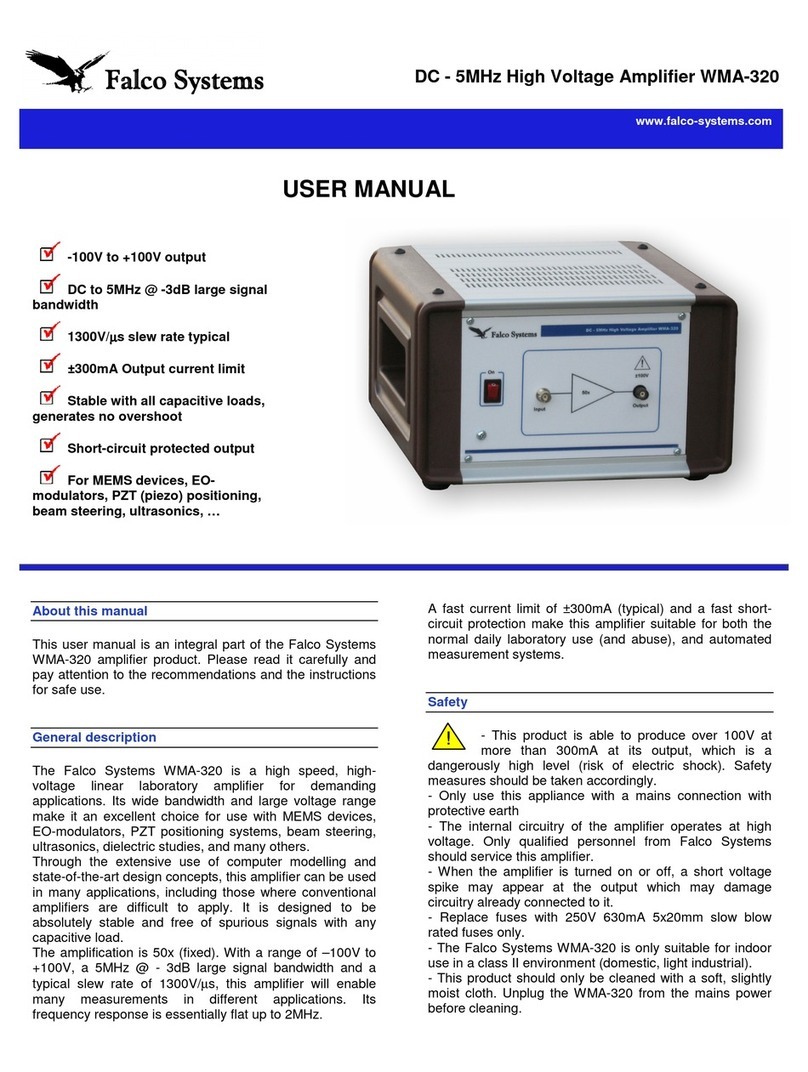Recommendations:
- Never apply more than +15V (-15V) to
the amplifier input to prevent damage.
- A short voltage spike may appear at the
output, when the amplifier is turned on or
off. Pay attention not to damage sensitive
circuitry or equipment already connected.
- The amplifier cannot be damaged by a
short-circuit condition or capacitive
loading, but two situations should be
avoided:
●Connecting a charged capacitor to
the input or output.
●Connecting a highly inductive load to
the output (such as a coil).
- Do not connect anything to the output
that can act as an antenna.
- Use the amplifier within its specified 15 -
30°C ambient operating temperature
range
- Unplug the WMA-100 amplifier from the
mains power before cleaning. Only clean
this product with a soft, slightly moist cloth.
Safety
- This product is able to produce over
175V at more than 100mA at its output,
which is a very high level (risk of electric
shock). Safety measures should be taken
accordingly. This is indicated by the sign
above the output connector.
- This product is a Class I appliance which
requires a mains connection with
protective earth.
- Always position the WMA-100 amplifier
such that the on/off power switch is easily
accessible.
- The airflow to and from the WMA-100
amplifier should not be blocked or
impeded, both at the front and the back
side.
- The internal circuitry of the amplifier
operates at high voltage. Only qualified
personnel from Falco Systems should
service this amplifier.
- Only replace fuses with the correct type:
●230V version of the WMA-100: 250V
250mA 5x20mm slow blow.
●115V version of the WMA-100: 250V
500mA 5x20mm slow blow.
- The Falco Systems WMA-100 amplifier is
only suitable for indoor use in a class II
environment (domestic, light industrial).
- Non-sinusoidal mains power generators
cannot be used to power this product.
Detailed properties of the WMA-
100 high voltage amplifier
Input
The input impedance of the WMA-100
high voltage amplifier is a 100kΩresistor
to ground, in parallel with 68pF to prevent
electrostatic discharge (ESD) input
damage. This resistor adds some noise to
the output voltage unless a low-impedance
source (e.g. a 50Ωoutput function
generator) is connected to the input. The
noise will be slightly higher when the
amplifier input is left open.
The 100kΩresistor also adds to the output
offset voltage because the offset current of
the input amplifier generates a voltage
over this resistor.
A high-speed amplifier like the WMA-100
model can never be made fully insensitive
to input overload conditions, as this would
limit the performance of the amplifier
significantly. For normal operation, input
voltages should remain in the -8.75V to
+8.75V range. This will result (with an
amplification of 20x) in an output voltage
swing of -175V to +175V.
Below -15V and above +15V, the input
protection circuitry will limit the voltage fed
to the amplifier. In this case, the amplifier
may be permanently damaged if the
current of the source is not limited.
Output
The WMA-100 model has been designed
to be fully stable with all capacitive loads.
It has been optimized for a perfect step-
response, but it is also a very good linear
and sine-wave amplifier.
The WMA-100 amplifier has a clever
feedback system, which ensures that no
significant overshoot occurs at any
capacitive load. The bandwidth of the
amplifier is automatically reduced to
ensure stability. Instability under capacitive
loading conditions is a common problem of
other high-speed negative feedback
amplifiers, often resulting in unwanted
output overshoot voltages, and, in extreme
cases, oscillations.


